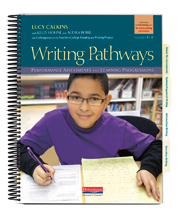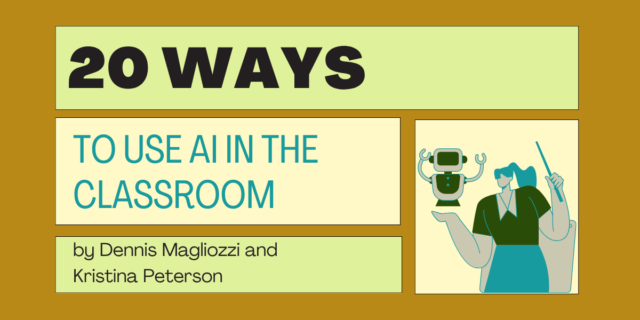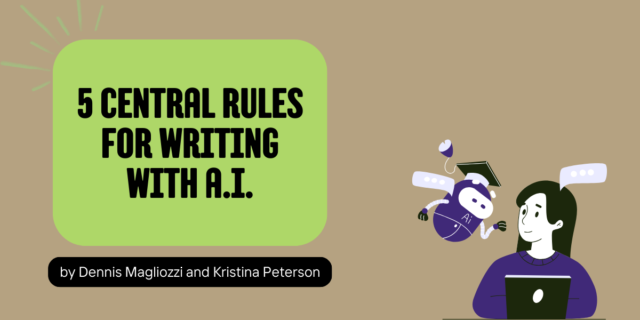
Lucy Calkins believes that students can only become stronger, more confident writers and learners when they know where they are going and have a clear roadmap to get them there. Her latest publication, Writing Pathways: Performance Assessments and Learning Progressions, Grades K-8 shows the way! Originally published as part of the bestselling Units of Study in Opinion/Argument, Information, and Narrative Writing, Grades K–8, this new edition of Writing Pathways can support any writing instruction context or curriculum. Today’s blog is an excerpt from Writing Pathways.
Writing Pathways: Performance Assessments and Learning Progressions, Grades K-8
Written by Lucy Calkins with Kelly Boland Hohne, Audra Kirshbaum Robb and Colleagues from the Teachers College Reading and Writing Project
This book is chock-full of resources and writing assessment tools that can be used across a district, school, or classroom. These tools can enable you to grasp where your students are in their writing development and to figure out what help they need to take next steps. The system of teaching and learning that is embedded in the series makes progress in writing concrete and attainable and allows students to share ownership of this progress. The tools within Writing Pathways—each of which has been piloted in thousands of classrooms through the work of the Teachers College Reading and Writing Project—include:
Learning progressions for opinion/argument, information, and narrative writing.
These three learning progressions are based upon thirty years of research-based practice in writing development and were designed to align to the lofty expectations of the Common Core State Standards. These progressions are written to communicate expectations to students as well as you, so they are written in straightforward, clear language. Not only will they help you track students’ progress across the three kinds of writing, locating each student’s current level and determining the next steps the student should take, but they will also help you to see the cross-currents between the three types of writing so that you can help students realize that lessons learned in narrative writing can transfer to information writing, and so forth.
In Part II of the book, each of the learning progressions is broken into two tables, one for PreK through grade 6, and one for grades 3 through 9, for ease of use. Please note that the full grade span PreK-9 is also provided in a single table for each genre online
Teaching rubrics for scoring each of the three genres.
These rubrics, grounded in the learning progressions, use numbers corresponding to grade levels and give appropriate weight to each category so that if your district requires this, you can derive a point score for each student’s work in a particular type of writing, as well as track students’ progress statistically. The grade-specific rubrics can be used to assess both on-demand writing and students’ published writing. While the student checklists only allow a student to say “not yet” with regard to meeting a particular expectation, the rubrics allow you to note whether that aspect of the writing resembles work expected for students who are two years below grade level, one year below grade level, or somewhere in between. While these scores are reductive—reducing the complexity of the work to numbers, as rubrics always do—they can help you to measure growth across time and notice patterns that can inform whole-class and small-group instruction. These scores can allow you to look at the data from select groups (boys versus girls, for example). Translating writing progress into quantitative data in this way also makes it possible to use indications of writing progress as measures of student learning in ways that meet your district or state mandates.
On-demand performance assessment prompts for each of the three genres.
These prompts, available for all three genres, direct students to compose the best piece of writing they can—narrative, information, or argument—in a fixed period of time. The resulting pieces can then be assessed using the learning progressions and rubrics. In other words, each student’s on-demand writing can be ascribed a grade level. Assuming you conduct a similar assessment at intervals throughout the year, you can track each student’s progress over the year, starting from this baseline piece of writing.
Student-friendly checklists for each genre.
These allow students to assess their own writing, set goals for themselves, and with your help, work to make palpable progress toward those goals. The checklists for grades K–6 have been illustrated and are also available in non-illustrated versions online. The Resources section of the Teachers College Reading and Writing Project’s website contains videos showing the use of these checklists in whole-class and small-group teaching to help you imagine the many ways to use these checklists in your daily writing instruction.
Two sets of benchmark student writing samples for each genre, at each grade level. Each benchmark text was written by a student, without help, using the on-demand prompt and protocol. These benchmark texts represent what students at each grade level should be able to do within a similar on-demand context by the end of that grade. The two texts at each grade represent different but equivalent ways for a student to be “at level” for that grade. One of the kindergarten narratives zooms in on a small moment; the other retells a story that happens across a broad swath of time. One of the fifth-grade narratives is angled to illustrate a theme; the other is a problem/solution story. One of the eighth-grade narratives tells a story and weaves suspense and character relationships into the story; the other narrative is more like a memoir, with explicit self-reflection and essay-like passages
incorporated into the storytelling.
The information and argument writing samples, too, show the variety of ways in which students can produce work that is at benchmark level.
For example, one of the third-grade information pieces is a little chapter book, the other is more like a feature article. One of the seventh-grade arguments is based on a topic of personal concern—wanting access to more rides at amusement parks—with evidence drawn from the writer’s own experience, while the other seventh-grade argument writer supports her position with references to research articles. Yet all of these texts are on grade level samples. The pieces are also selected because they are memorable: they are funny or insightful. You and your students will enjoy them and find them worth studying. Many teachers use these texts within mini-lessons, conferences, and small-group work as a way to give a clear vision of specific writing goals.
“Up the ladder” annotated demonstration texts in each genre, for each grade level.
My colleagues and I have written these texts, which progress through grades K–8 with essentially the same content in each genre, to show how small revisions add up incrementally to texts that meet increasing expectations. For each K–8 grade level, there is an iteration of the same text that matches the expectations for that grade. In each instance, we write a text as if we were a kindergartner and then improved it up a notch to write it like a first-grader, then a second-grader, and so on through eighth grade. These pieces illustrate the items on the checklist—more precisely and completely than any one piece of student writing ever could—and can be used to show students how they can revise their own writing to take it from one level to the next. For example, a second-grade teacher could use the third-grade level text to demonstrate to students how they might go about writing a more sophisticated conclusion.
Other writing performance assessment tools.
These assessments include a progression for assessing students’ engagement with the writing process, and (online) writing-about-reading sample on-demand prompts and rubrics.
♦ ♦ ♦ ♦
 Writing Pathways is available now. To learn more about the book or to read a sample chapter, click here: Writing Pathways: Assessments and Learning Progressions, Grades K-8
Writing Pathways is available now. To learn more about the book or to read a sample chapter, click here: Writing Pathways: Assessments and Learning Progressions, Grades K-8


